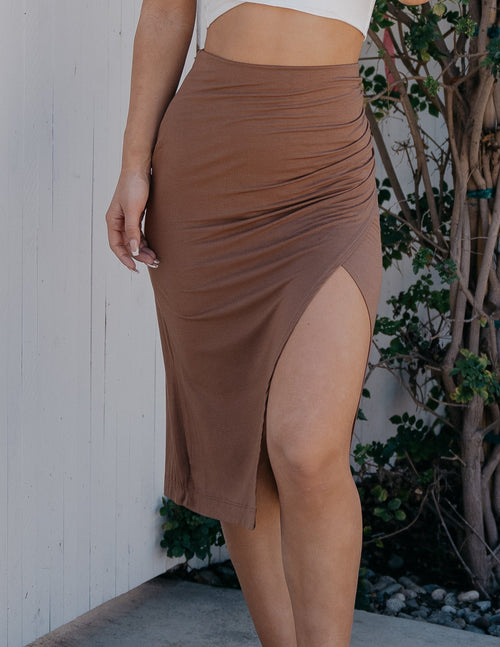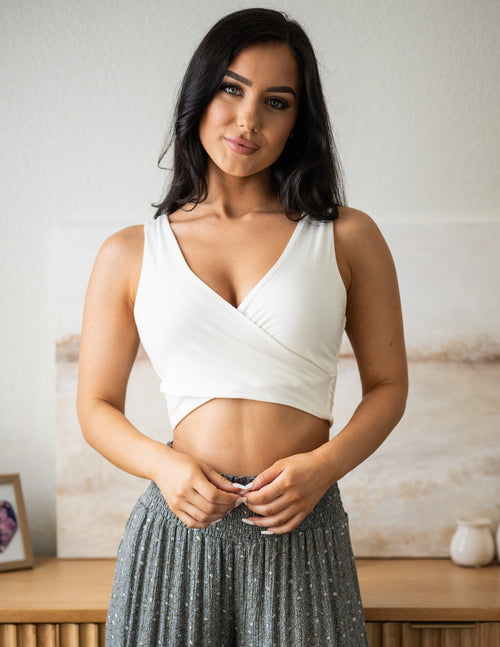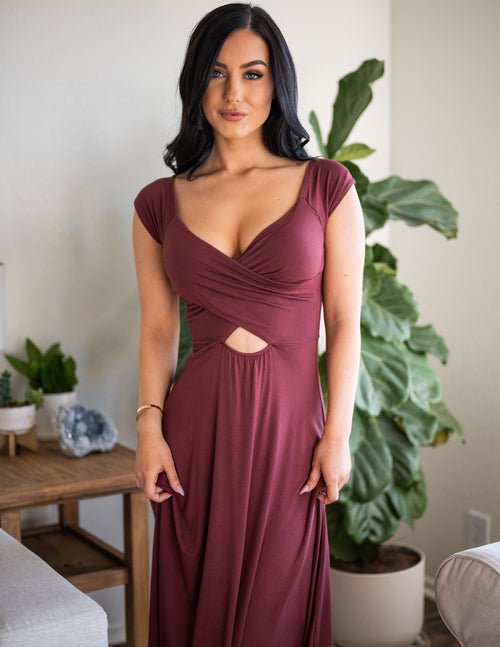
IN THIS ARTICLE
We've all been there. The season's change and you pull out your favorite sweater from your winter stash only to see a bunch of bobbles and fuzz clinging to your once gorgeous garment. Pilling on clothes is so annoying. Not only does it make your clothes look old and musty but it also reduces the life cycle of your togs and means that you have to invest time to remove pills and get your clothes fuzz-free. As they say, prevention is better than a cure, so we are going to share tips on how to prevent clothes from pilling (and how to save those garments that have already gone to the fuzz gods).
What Causes Pilling Fabric?

So why do pills form on clothes? The simple answer is that pills tend to form on the parts of your clothes or linen or any fabric where abrasion happens. This can be around the thighs, underarms, on cuffs, and in the center of your bed linen. Linting, pilling, fuzzing - it all breaks down to being broken fibers that get pulled from your clothes and then caught up again when your clothes go through the washing machine or the tumble dryer.
Some fabrics are more prone to pilling than others. Synthetic fabrics are the worst culprit when it comes to pilling as a polyester surface is more likely to build up a higher negative electrical charge when rubbed. This means it becomes a magnet for anything and everything floating around your washing machine or clothes dryer.
Once the lint and little fuzz balls are attracted to your fabrics, they get tangled up in the fibers of your clothes and turn into those annoying little lint balls and fabric pills. We all now know that synthetics suck when it comes to keeping your lint count low, but what exact fabrics out there are making life hard for us?
In short, smooth tightly woven fabrics are less likely to pill and bobble as loose fiber has less chance of escaping a tighter woven fabric. Pilling is more likely when you have a blend of two different fabrics and one is stronger than the other. The weaker fabric will release more excessive fibers and the stronger one will hold the lint balls in place. Fabrics with long fibers will pull less than other fabrics with shorter fabrics.
Fabrics prone to pilling
- Polyester and other manmade fabrics like acrylic, nylon, rayon, and spandex
- Knitted fabrics tend to pill as the threads are looser
- Blended fabrics (especially those that blend natural and synthetic fibers)
Fabrics least likely to pill
- Silk
- Linen
- Egyptian Cotton
- Merino Wool
- Hemp
- Cashmere
How To Get Rid Of Pilling

OK, so unless we are all going to have a wardrobe brimming with fabrics made of silk and linen, we are likely to come across the problem of pilling from clothes. The question is how to prevent it as much as possible and how to deal with it when it rears its fuzzy head. Don't go tossing out that favorite pair of leggings, cozy flannel shirt, or all your blended sweaters and bobbly bed sheets just yet.
Here are some tried and tested techniques for becoming a first-class pill remover.
With a Razor
Just like removing the stubble from your legs, a razor can be a savvy way to remove pilling. You do need to be really careful not to go down the path of damaging lighter delicate fabrics and causing further snags. AKA be sure to keep a flat surface by pulling the fabric taut. If you don't want to risk razor burning your clothes, you can use a special fabric shaver or pill shaver.
With a Lint Roller
A simple technique to remove lint and loose fibers (and even pet hair when you've been cuddling too hard) is to use a lint roller. While a lint brush won't be the hardiest solution for removing tangled pilling it can make your clothes look good.
With a Pumice Stone
Rough surfaces gently rubbed across your clothes can help to get rid of your pilling problem. You can also use a sweater stone to the same effect or even a sandpaper sponge will do the trick. This method maybe a little too abrasive on delicate items.
With Sticky Tape
Use sticky tape or a velcro strip to remove fuzz from your clothing. Basically, you lay the sticky side down on your clothes and when you pull it off it should bring the lint with it.
With Scissors
A simple and effective method for getting pills and bobbles off your clothing is to take a sharp pair of scissors and cut each one off individually. While this is time-consuming and you have to be careful not to snip the clothing, it is a low-tech way of cutting through the problem.
How To Prevent Pilling

As we talked about, when it comes to keeping your clothes safe and sound, you want to just do your very best to avoid the whole pilling issue in the first place. Easier said than done. While you may not be able to wave your magic wand and prevent pills altogether, you can definitely have some success in practices that lead to less pilling. Let's take a look at how you can fix your fibers in a way that reduces the age-old problem of pilling. It's time to say bye to the lint ball.
Choose a Gentle Cycle
Short of hand washing all your clothes, pilling is probable on certain fabric fiber garments. In an effort to reduce wear and tear, you can choose to put your clothes on a delicate cycle when washing lint-producing fabrics. This will help lessen abrasion which will lead to less friction and less chance of individual fibers getting tangled up. You can also put your clothes on a shorter wash cycle to minimize damage.
Don't Overload
You want to try and avoid fabrics being crammed together and rubbing - causing even more abrasion. In order to keep plenty of space going, try not to fill your washing machine with a ton of clothes. You also want to try and separate clothes into categories when washing. If you can only wash your cotton fabric items together and your other materials (and colors) together, then you have a better chance of keeping your clothes lint and fuzz-free.
Turn Inside Out
Before washing (even if opting for a hand wash), make sure you turn your garment inside out. Turning clothes inside out will help stop even more abrasion from things like zips, buttons, and other such garment features from adding to the friction.
Pick the Right Detergents
If you can find a laundry detergent that has enzyme cellulase in it, then you are about to adore laundry day (joke). This specific enzyme in liquid detergent can help to break down pills on fabric and even remove them, saving you a whole day with a razor blade and a sweater. You can also throw in some fabric conditioner or fabric softener which will help to keep garments soft during the rinse cycle and lead to less friction in there.
Decide to Air Dry
If you can skip out on shoving clothes in the tumble dryer, then you will be doing your clothing a thousand favors. While we all love warm-cozy-tumble-dry-clothing, this can also add to the wear and tear and rubbing of short fibers against each other - ultimately leading to more pilling. Instead of using the tumble dryer, you can lay clothes flat to dry or hang them on the line. This is especially important when dealing with delicate fabric or wool and knits where you are more likely to get broken fibres.
How to Pick and Care for Clothes to Avoid Pill Problems

- If you can, look for clothes with longer fibers they are less likely to pill.
- Avoid blends that combine natural fibers with synthetic fibers.
- Choose tightly woven fabrics as these are less likely to pill
- Use a fabric comb or sweater comb to cut down on fuzz problems
- Stash your delicate items in a garment bag
- Protect your fabrics from abrasion by wrapping scarves around seatbelts and straps when you carry backpacks. Anything you can do to reduce normal wear and tear the better.
What are your tips for finding and caring for clothes that don't suffer in the land of lint? Do you stick to natural fabrics or do you have a certain brand of fuzz-free powder detergents you move? Feel free to share your laundry room insights with our Sozy VIP community.










































































 TOP
TOP



